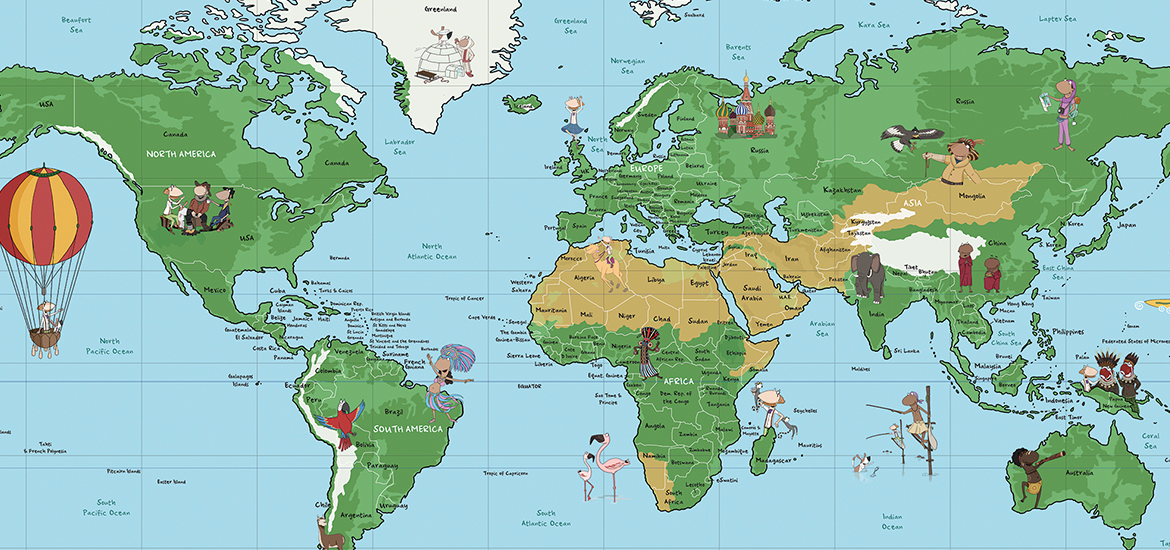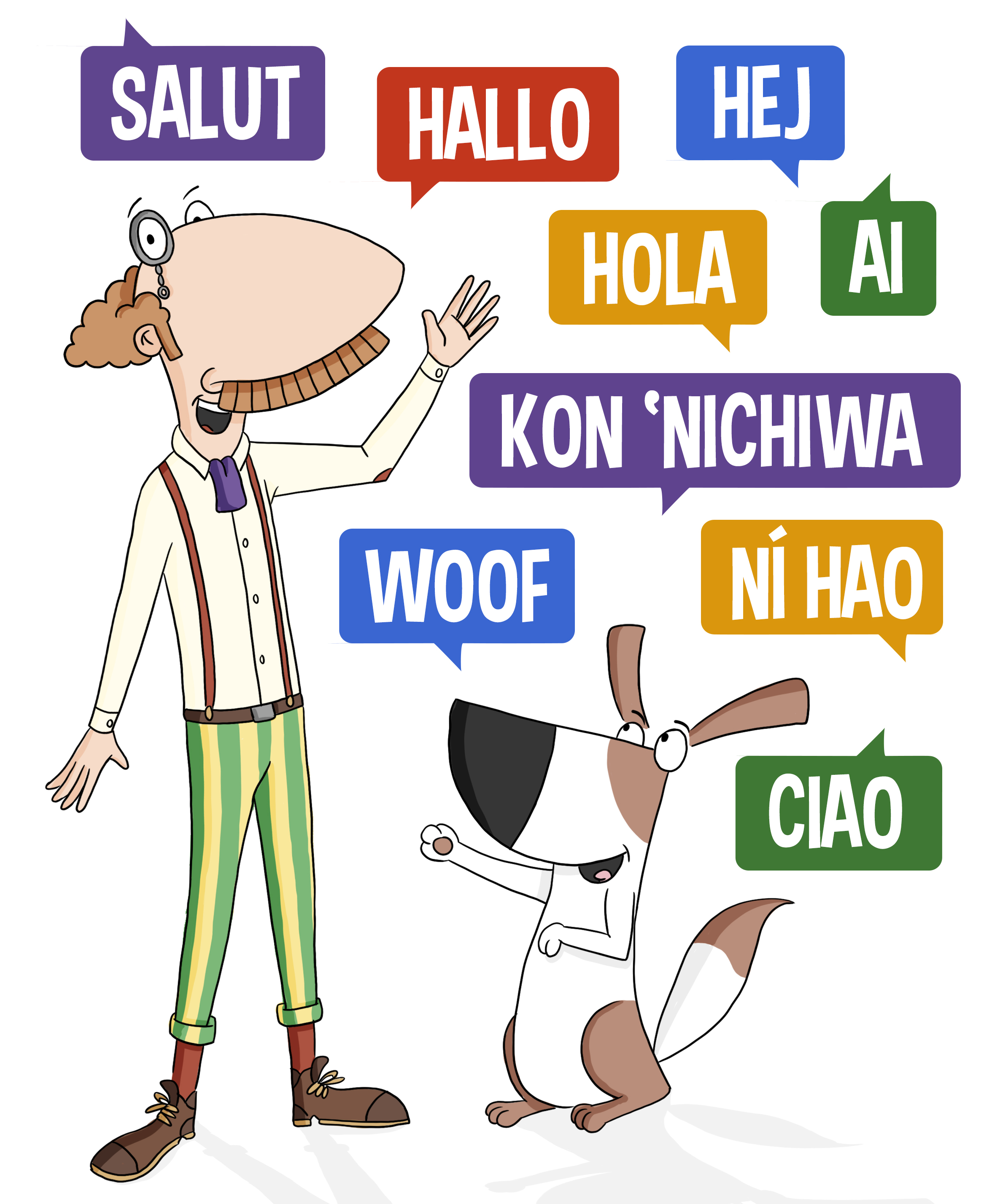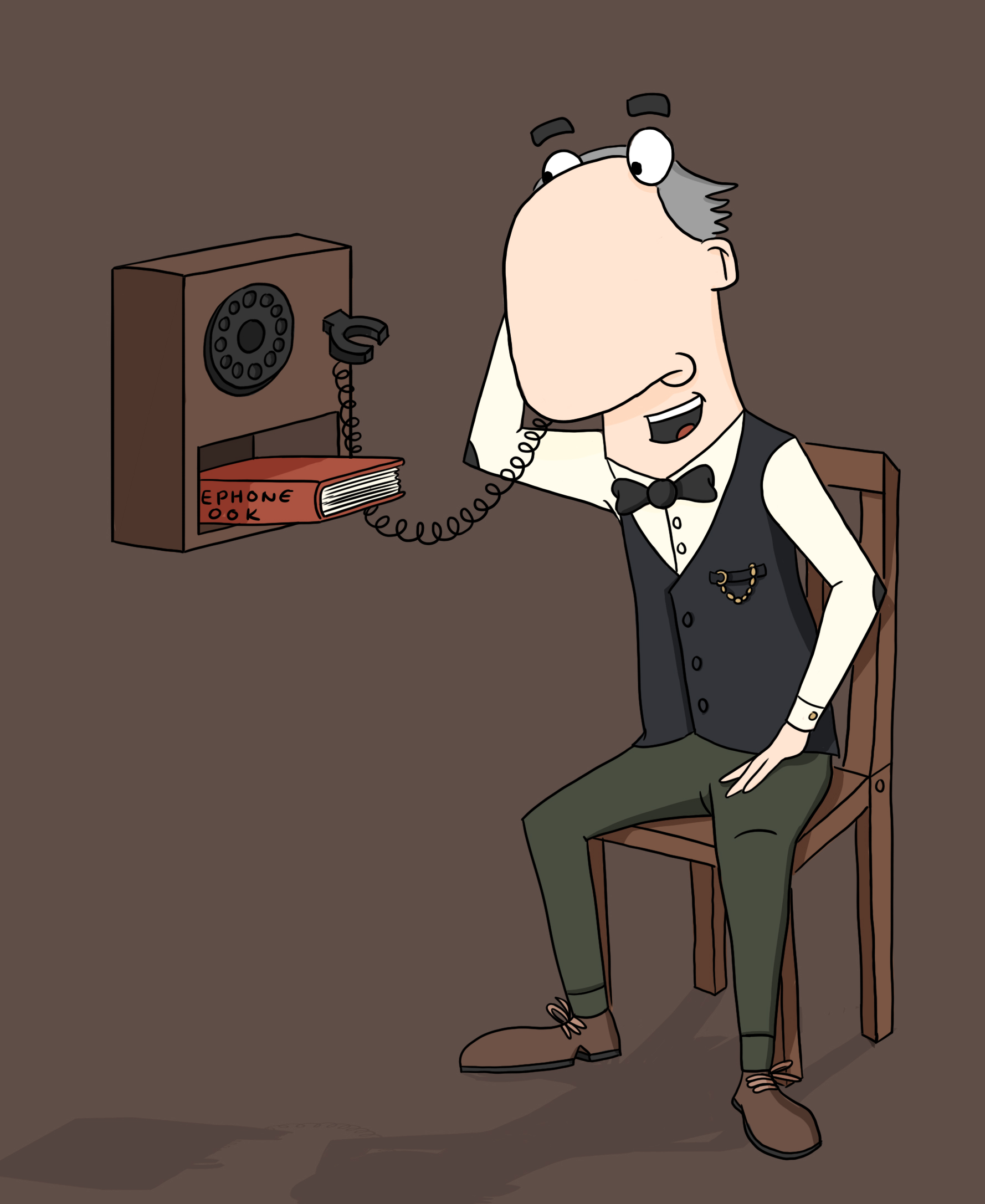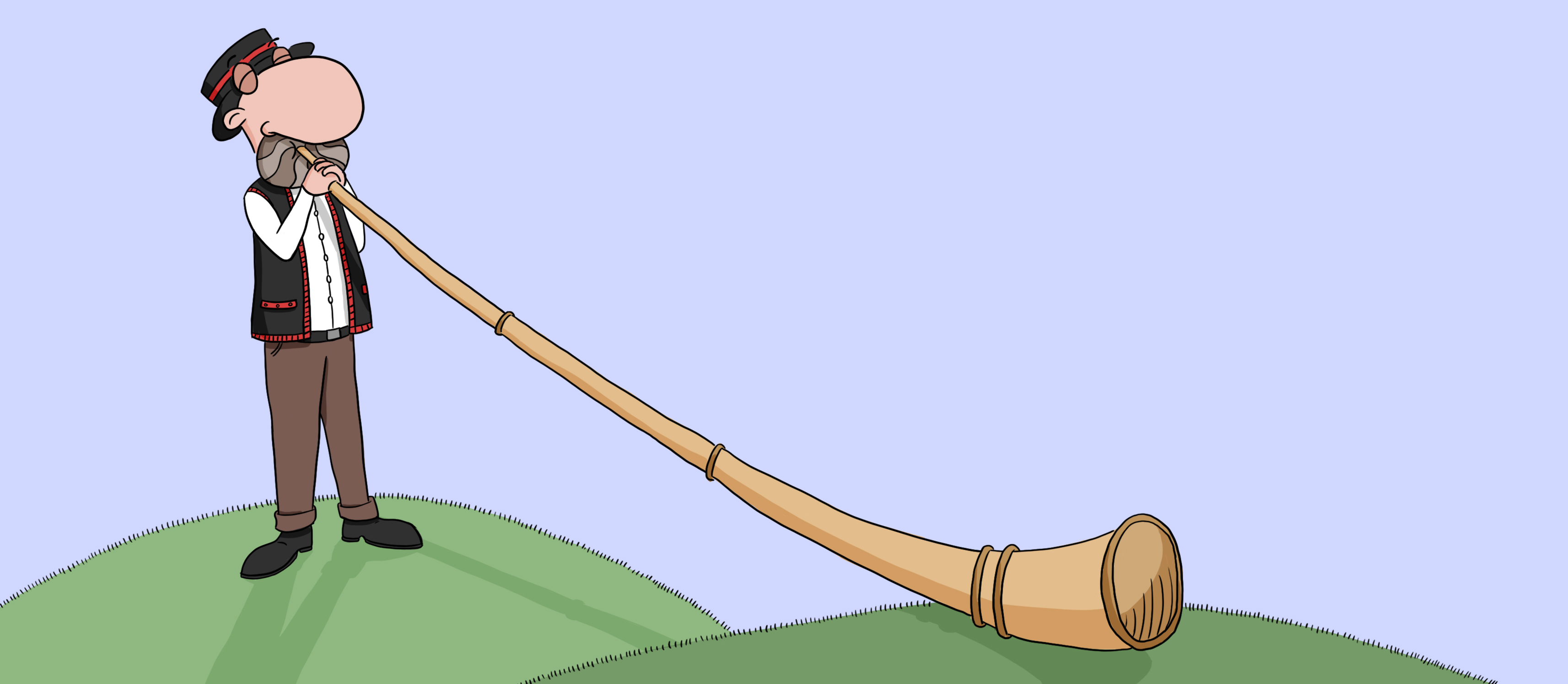“Hello,” the simple word that makes us all feel welcome. Whether you’re meeting your best friend or a room full of new people the word hello is usually the first thing you say.
November 21 marks the 46th annual World Hello Day, a day that highlights the need for world peace and encourages us all to greet 10 new people with the simple, welcoming word of hello. I’m Archibold Clutterbuck, a Worldly Adventurer. Join me and my companion Beans the dog as we delve into the world’s favorite greeting.
Did you know that World Hello Day is celebrated in over 180 countries! That’s at least 180 different ways of saying hello! But where does the English word ‘Hello’ actually come from? Well, we will have to travel back in time to 1878 when the telephone had just been invented to find that out…
It was the American inventor of the telephone, Mr. Thomas Edison that first popularised the phrase when he recommended it as the first greeting you should announce when you answer the phone. He printed it in the first ever telephone book and it’s been popular with people ever since.
Before this, the word hello was a word to get someone’s attention rather than a polite greeting. However rival inventor, Alexander Graham Bell from Scotland, thought a better word would be ‘Ahoy’. Imagine if he had got his way, we’d all be talking like pirates!
So as we’re on the subject of pirates let’s travel the Seven Seas and learn hello in other languages.
If you live in the South American countries of Argentina, Chile or Peru then you might say ‘Hola’ in the Portuguese language. Or if you’re living in a French-speaking country you would greet people with the word ‘Salut’.
Do you know someone from Japan? Greet them with ‘Kon’nichiwa’ but be careful when you say it. This word for hello is only spoken in the afternoon. Overwise its ’Ohayō gozaimasu’ in the morning and ‘Konbanwa’ in the evening. Japan has lots of intricate customs and cultures that date back many thousands of years so make sure you do your research if you fancy a trip there.
Some countries such as Australia who speak the English language have created their own forms of saying hello. You’ll often hear a native Australian greeting of ‘G’day’, which is a shortened version of ‘Good day’.
Here are some more ways to say hello in other languages around the world. If you know people who live or come from these countries then why not greet them in their native language:
Germany – Hallo
China – Ní hǎo
Denmark – Hej
Italy – Ciao
Turkey – Merhaba
Russia – Zdravstvuyte
Inuit – Ai
Vietnam – Chào
Hello in many languages is deeply embedded in religious traditions. For example, if you are living in India and practice Hinduism you would greet people with the phrase ‘Namaste’. This word translates as ‘I bow to you’, which offers respect to the person you are saying hello to.
Many words for hello are more than just a welcoming greeting. The Jewish greeting ‘Shalom’ directly translates to mean ‘peace’ and the Muslim greeting ‘As-salamu alaykum’ means ‘Peace be upon you’. This is politely returned with the phrase ‘wa ʿalaykumu s-salām’ meaning ‘And peace be upon you’. These words and phrases have over many hundreds of years substituted the word hello.
To celebrate World Hello Day this year, let’s all go out and say a friendly hello to 10 new people.
In countries such as the United Kingdom and the USA, a handshake is given to people that you meet. Or if you are meeting a King or Queen in Europe then you must adopt a bow if you’re a man or a curtsey if you’re a woman. All of these help to greet, say hello and show respect to the person you’re meeting.
Many countries in Asia adopt a bow when greeting someone too. This can be seen in the Chinese culture where depending on how low you bow depends on how important the person is. The more important they are the lower the bow.
People who come from Oman and New Zealand like to get really close when they say a traditional hello. This closeness helps them to connect with one another. Omanis make sure that their noses are touching one another whilst the New Zealanders focus on touching both their noses and foreheads together. For the New Zealanders, this comes from their indigenous Maori heritage and is called ‘Hongi’. It signifies the moment their God breathed life into the first woman by pressing their head to hers.
There is even a traditional Swiss instrument called the Alphorn that was used to say hello in years gone by. The extremely long horn was blown in specific ways to communicate with others over long and mountainous distances. Although I wouldn’t try this method on World Hello Day unless you live in the mountains as it gets very loud!
And it’s not just people that greet each other with hello. My dog Beans is famed for his friendly bark as he says hello to both people and his fellow four-legged friends. Isn’t that right Beans?
Woof!
Saying a simple hello or shaking someone by the hand remains the perfect way to greet new friends, family or old mates. World Hello Day is all about making peace and a simple, friendly hello can often be all it takes to make someone feel happy, safe and welcome. To celebrate World Hello Day this year let’s all go out and say a friendly hello to 10 new people. They could be people you meet at school or at work, family members you haven’t seen for a long time or a shop worker when you’re buying your groceries. You might even text or message a friend that you haven’t spoken to in a long while. Hello goes a long way and can spark a conversation which could lead to all sorts of adventures.
Catch up with all my latest Worldly Adventures at www.archiboldclutterbuck.co.uk or on Instagram @archiboldclutterbuck. It’s a free education platform for children to learn all about the world, it’s people, culture and everything in between. We hope to see you soon for another Worldly Adventure!
Archie (and Beans)
All illustrations including the featured image above the article title are © The Worldly Adventures of Archibold Clutterbuck & Friends




